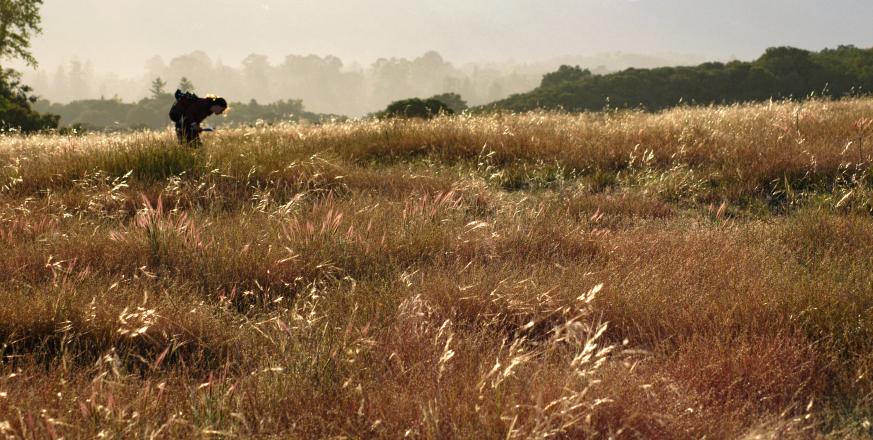The fungal disease burden of Jasper Ridge grasses and grasslands

Plants, like humans, are host to many pathogens. Just how many pathogens and just how much of a disease burden they levy is not immediately evident in seemingly tranquil and restorative places like Jasper Ridge. But in two new publications from Professor Erin Mordecai’s lab, we get a different view, that of Jasper Ridge grasses confronting diverse and ubiquitous pathogenic fungi. And it turns out that the disease burden from those fungi depends on many of the same factors that affect disease susceptibility in humans—the background environment, proximity to infected individuals, overall pathogen burden, and even the weather. The results suggest a host of new questions about the roles of fungal diversity, plant evolutionary history, and climate for the future of California grassland biodiversity.
One of the new publications takes advantage of a natural experiment by asking how a plant’s fungal disease burden differs between populations of a single plant species, Stipa pulchra (purple needlegrass), growing on two adjacent substrates that differ dramatically in chemistry—serpentine soils and non-serpentine soils (derived from sandstone or greenstone). The paper is based on three years of undergraduate research by lead author Johannah Farner’18 and her mentors and coauthors, Professor Erin Mordecai and former postdoctoral scholar Erin Spear. As Johannah explains in the video below, they found a diverse array of fungal pathogens and many were serpentine-specific. Nonetheless, they found that the overall disease burden on Stipa pulchra varied more across years than across substrates.
The other new publication draws on observational data and data from a field experiment in which individuals of five grass species were grown as disease sentinels within different densities of surrounding grasses. This study was conducted by postdoctoral scholar and lead author Amy Kendig (University of Florida), together with coauthors Erin Spear, Caroline Daws (now a Stanford PhD candidate), Luke Flory and Professor Mordecai. Again there were some surprises. Native perennial grasses experienced higher disease severity than non-native annual grasses. This upended the expectation that annuals would have higher disease severity than perennials, but is consistent with findings of higher disease severity in native plants than non-native. Also contrary to expectation, there was limited evidence for an increase in pathogen-caused damage as plant density increased. Thus, for grasses that are fending off fungi, “social distancing” seems to have limited benefit.
Synthesizing the results of the two studies Professor Mordecai was struck by “the unseen diversity of Jasper Ridge grasslands, not just the confluence of native and non-native plants but also a web of fungal species connecting plant species through infection. We already knew that serpentine grasslands were diverse in native plants and animals, but now we can see that they also host fungi not found in other grasslands, some of which we didn't even know could cause disease."



